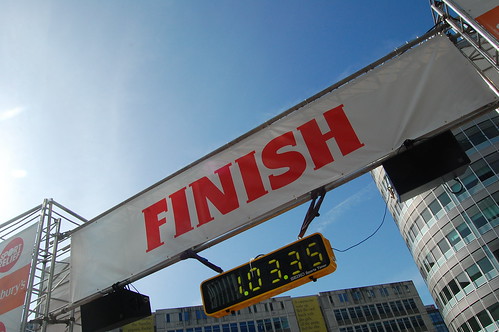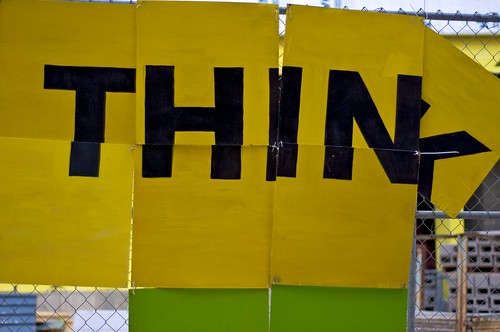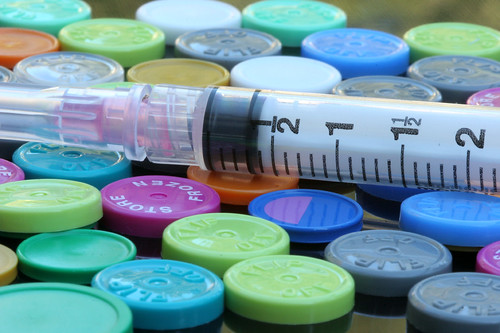 Two concepts that are often thought to exist in separate training worlds are endurance and power. Traditional coaching philosophy would have you train them in vastly different ways.
Two concepts that are often thought to exist in separate training worlds are endurance and power. Traditional coaching philosophy would have you train them in vastly different ways.
The typical example is the difference between marathoners and sprinters. This leads to a common debate - can a sprinter become a marathoner? Or vice versa?
Are endurance and power really as different as we might think?
Endurance and power have a common thread. What brings them together in real life? Mitochondria.
 The world of sport is filled with more assumptions than we care to consider. And we all know that when you build a house on the quicksand of faulty assumptions, the second and third stories topple over pretty easily.
The world of sport is filled with more assumptions than we care to consider. And we all know that when you build a house on the quicksand of faulty assumptions, the second and third stories topple over pretty easily.
So it goes with "performance-enhancing" drugs. The Lance Armstrong saga has reminded us yet again that the culture of sports continues to need to believe - deeply - that high level athletic performances require doping. Our sporting culture assumes that human performance is at a crossroads, that stellar world-record performances require something illicit.
But with that said, I would suggest that it is the belief systems in sports - not the drugs - that are the bane of our athletic existence.
 Pro football's finest hour (or four) will soon be upon us. The Super Bore is this weekend. With any luck, it won't be a bore, though the majority of them have had little in terms of excitement. Past history would indicate a good chance of a blowout. Maybe this year will be different. If not, we can always just turn it off and discuss deer antler spray or Randy Moss' legacy in the meantime.
Pro football's finest hour (or four) will soon be upon us. The Super Bore is this weekend. With any luck, it won't be a bore, though the majority of them have had little in terms of excitement. Past history would indicate a good chance of a blowout. Maybe this year will be different. If not, we can always just turn it off and discuss deer antler spray or Randy Moss' legacy in the meantime.
With fingers crossed for a great game this weekend, let's take first down and ten and move along to episode 059 of the Rhubarb Report.
 What defines clinical excellence? In his book "Outliers", Malcolm Gladwell writes about the "10,000 Hour Rule". Based on his research and observations, he claims that the key to success in any field is a matter of attaining 10,000 hours of practice.
What defines clinical excellence? In his book "Outliers", Malcolm Gladwell writes about the "10,000 Hour Rule". Based on his research and observations, he claims that the key to success in any field is a matter of attaining 10,000 hours of practice.
After four days of interacting with many physical therapists, physical therapist assistants, educators, and students in San Diego, it became readily apparent to me that Malcolm Gladwell was describing clinical excellence in the physical therapy profession. Very well, as a matter of fact.
Clinical excellence is not a degree program. It is time in the clinic - assessing, treating, observing.
So what does 10,000 hours look like in physical therapy? And why should the physical therapy profession care?
 The past week had me out in San Diego for the American Physical Therapy Association's Combined Sections Meeting (CSM). It looked like a pretty good conference program, and hey, you can't beat the weather in San Diego, right?
The past week had me out in San Diego for the American Physical Therapy Association's Combined Sections Meeting (CSM). It looked like a pretty good conference program, and hey, you can't beat the weather in San Diego, right?
As it turns out, San Diego was overcast the majority of the time I was there. When it was all said and done, I really can't say that I was that impressed with the programming. More on that later.
But there was a huge redeeming feature to those days in San Diego. It turned out to be a "meeting of the minds" of sorts - brought to us by social media.
 During my 25 years of clinical practice, I have seen my share of patients tagged with the "complex" label. Many of the patients that I see in the clinic come to me after having failed other treatments. Colleagues will refer patients for case review or for second opinion. I truly enjoy the process of problem solving and being the clinician charged with the task of finding the essence of the patient's problem.
During my 25 years of clinical practice, I have seen my share of patients tagged with the "complex" label. Many of the patients that I see in the clinic come to me after having failed other treatments. Colleagues will refer patients for case review or for second opinion. I truly enjoy the process of problem solving and being the clinician charged with the task of finding the essence of the patient's problem.
Sometimes, complex patients are truly complex. They may have co-morbidities or confounding variables. It may be a challenge to sift through their history. They may present with confusing signs and symptoms.
But more often than not, complex patients aren't so complex. They are complex in our minds as we become victims of our own poor clinical reasoning processes.
 The Lance Armstrong interview with Oprah Winfrey is now officially a part of history. Two nights, millions of viewers - and just as many opinions on the decade-long fiasco.
The Lance Armstrong interview with Oprah Winfrey is now officially a part of history. Two nights, millions of viewers - and just as many opinions on the decade-long fiasco.
I will be the first to admit that I was an Armstrong supporter. I found myself inspired by his story. I read both his books. I wore a yellow wrist band. I was proud that he called Austin home. I even wrote 4 posts, in support of him in one way or another, as recently as July 2012.
Well, the truth is now well and truly out of the bag. And I admit, I was wrong, blatantly wrong, about Lance Armstrong. Consider this my apology to the blogosphere and to you, the reader. I stand corrected.
There were many of us that were wrong about Lance Armstrong. And that's okay. There is much to be learned from the aftermath of Lance, not just about performance-enhancing drugs or sport, but about life and the culture we live within.
 "Running Injuries: Etiology And Recovery- Based Treatment" (co-author Bridget Clark, PT) appears in the third edition and fourth editions of "Clinical Orthopaedic Rehabilitation: A Team Approach" by Charles Giangarra, MD and Robert C. Manske, PT.
"Running Injuries: Etiology And Recovery- Based Treatment" (co-author Bridget Clark, PT) appears in the third edition and fourth editions of "Clinical Orthopaedic Rehabilitation: A Team Approach" by Charles Giangarra, MD and Robert C. Manske, PT.
 Allan Besselink, PT, DPT, Ph.D., Dip.MDT has a unique voice in the world of sports, education, and health care. Read more about Allan here.
Allan Besselink, PT, DPT, Ph.D., Dip.MDT has a unique voice in the world of sports, education, and health care. Read more about Allan here.
 Top 5 finalist in three categories: "Best Overall Blog", "Best PT Blog" and "Best Advocacy Blog".
Top 5 finalist in three categories: "Best Overall Blog", "Best PT Blog" and "Best Advocacy Blog".